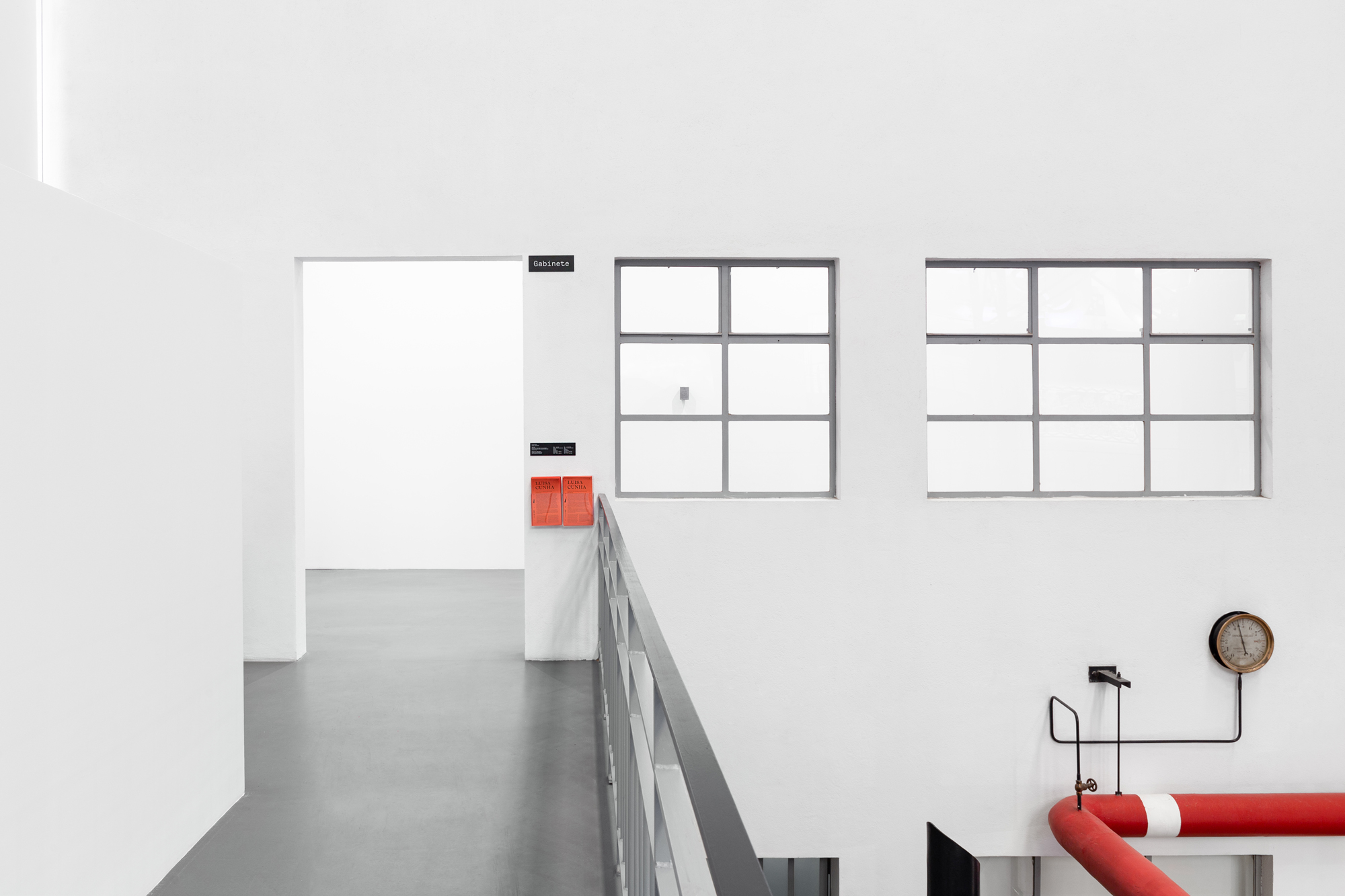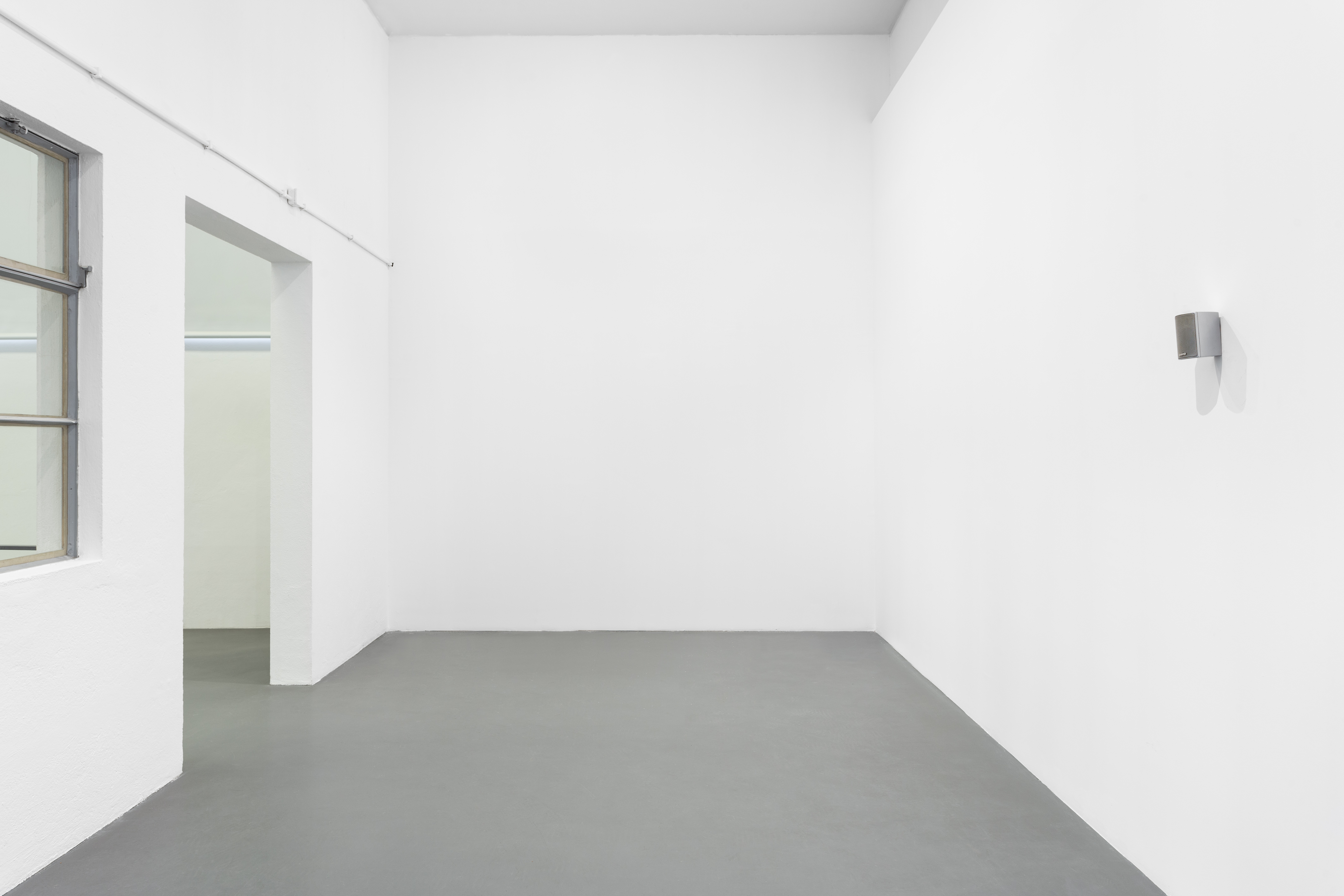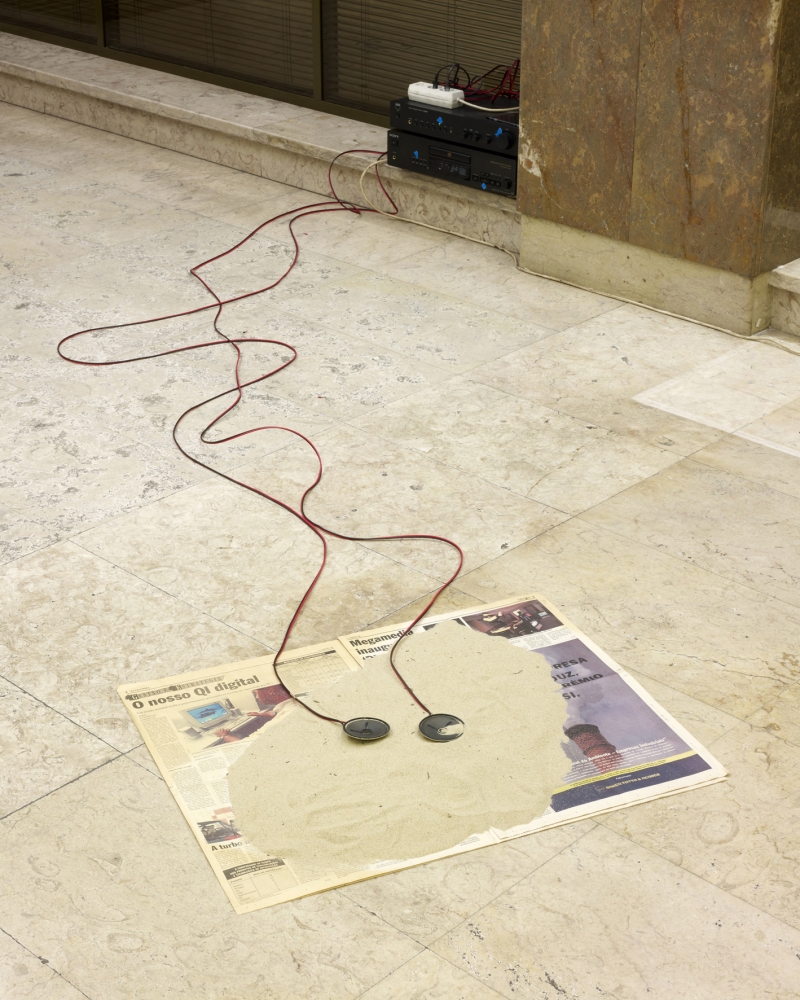

Views of Não (2018) by Luisa Cunha installed at Gabinete (maat, 12/03 – 18/04/2022), a new venue inside Central Tejo. Photos: Bruno Lopes, courtesy of EDP Foundation / maat.
No........ no, it isn’t him
No........ no, no, no, it isn’t him
No, no
It isn’t him
No, it isn’t him
No, no, no....... it isn’t him
It isn’t him, no
No........ no....... it isn’t him
|
Luisa Cunha Não, 2018 Sound column, audio cable, sound (recorded voice); 1 min 36 s, loop Dimensions variable Single edition EDP Foundation Portuguese Art Collection |
“This work is a portrait. Normally, portraits are instantly associated with photography and, even more so, with drawing and painting. This piece is sound text portrait. In the same way that the drawing in my piece Words for Gardens (2004) was also in sound text and the piece Ali vai o João [There Goes João] (1996) is a photographic description of a space equally in sound text.
Não [No] is the construction of a portrait which is envisaged through the negative and the deletion. The phrase “No, it isn’t him” is the basis for a series of variations that correspond to a meticulous observation in which someone wants to be sure that a particular person is not in fact another. The sharpness of the observation forces the observer to take some time before being certain of the identity of the person in front of him. This is conveyed by the variations in intonation and the the phrasal construction. This is a similar situation to that which occurs, for example, when identifying a criminal from the various people in a line-up.”
— Luisa Cunha
Luisa Cunha and the Idea of the Ready-Made
João Pinharanda
Luisa Cunha prefers to work with words (expressed in her sound and written pieces, and in her handwritten or printed inscriptions) and the meanings (visual and semantic) of words. Each of these pieces describes places, people and archetypal situations. When faced with these moments, generally snippets of daily life which the artist merely records or recreates (a procedure Modernism labels “ready-made”), we also become aware of their triviality and uniqueness. We feel part of or challenged by the same reality the artist presents us with.
Based on the fragments of trivial discourse Luisa Cunha assembles, this “commonness” is made to look ridiculous, comical or unsettling-common, revealing our idiosyncrasies and those of the society we live in. However, her aim is not to express a criticism (either social or of manners). Rather, she leaves each person-listener with the task of acknowledging their role in the world around us and understanding how the commonest words mould this reality.
In this piece, which the artist calls a “portrait”, nobody is described: there is just a negative (repeated 21 times by the voice of the artist herself) that informs us that the person she sees “isn’t him”. We are thus denied the possibility of satisfying our curiosity before a fictional reality.
|
Gabinete (or Cabinet) reinstates the original name of a room at Central Tejo, now with the function of a new space at maat for the exhibition of small nuclei of works by Portuguese artists. Programmed by João Pinharanda, maat director, the first artist to exhibit at Gabinete is Luisa Cunha, with the sound piece, Não (2018), recently acquired for the EDP Foundation Portuguese Art Collection.
|
Luisa Cunha was born in 1949, in Lisbon, where she lives and works. With a degree on German Philology, at the School of Arts and Humanities, University of Lisbon, she concluded in 1994 the Advanced Course in Sculpture at AR.CO, School of Visual Arts, Lisbon. Heir to the dematerialising experiments in international art of the 1970s, Luisa Cunha has exhibited her work since 1993 in institutions like the Serralves Museum in Porto, Culturgest in Lisbon, and the Quartel Municipal de Abrantes, among others. In 2021 she was the winner of the EDP Foundation Art Grand Prize, having the jury highlighted “the originality, experimental boldness, multidisciplinary and pioneering nature in the use of new languages”, while also emphasising how influential she has been to younger generations, and also “how she works with space and sound based on verbal language, in a permanent game of constructing and deconstructing meanings”.
|






